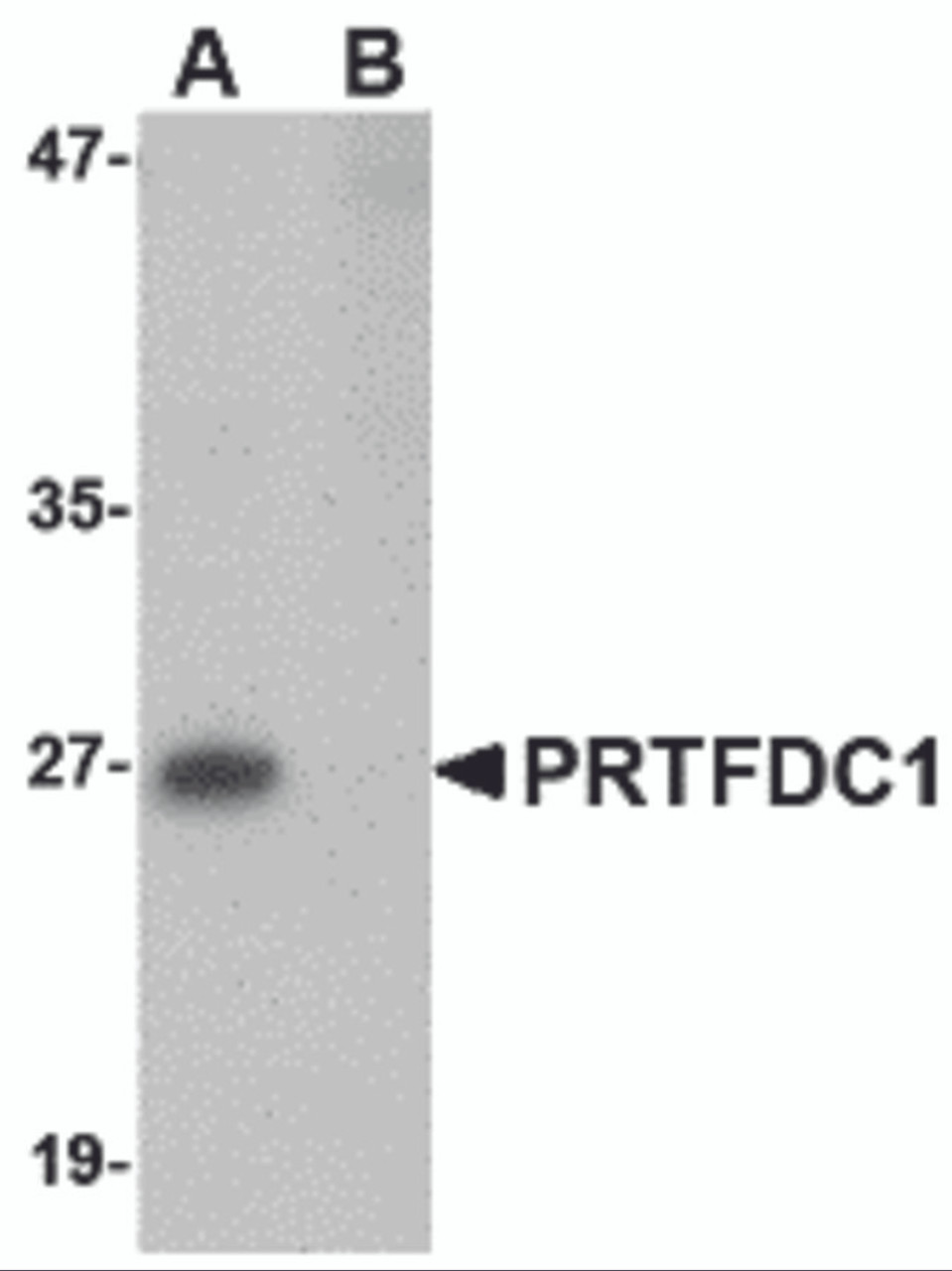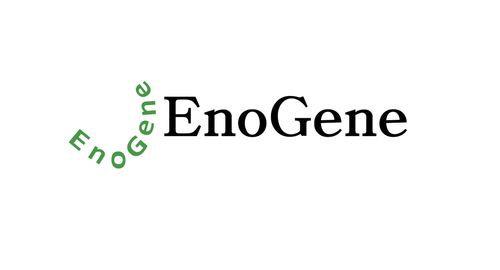Product Description
PRTFDC1 Antibody | 4775 | ProSci
Host: Rabbit
Reactivity: Human, Rat
Homology: Predicted species reactivity based on immunogen sequence: Chicken: (86%) , Pig: (86%) , Bovine: (86%) , Mouse: (86%)
Immunogen: PRTFDC1 antibody was raised against a 14 amino acid synthetic peptide from near the center of human PRTFDC1.
The immunogen is located within amino acids 90 - 140 of PRTFDC1.
Research Area: Homeostasis
Tested Application: E, WB
Application: PRTFDC1 antibody can be used for detection of PRTFDC1 by Western blot at 1 μg/mL.
Antibody validated: Western Blot in human samples. All other applications and species not yet tested.
Specificiy: N/A
Positive Control 1: Cat. No. 1303 - Human Brain Tissue Lysate
Positive Control 2: N/A
Positive Control 3: N/A
Positive Control 4: N/A
Positive Control 5: N/A
Positive Control 6: N/A
Molecular Weight: N/A
Validation: N/A
Isoform: N/A
Purification: PRTFDC1 Antibody is affinity chromatography purified via peptide column.
Clonality: Polyclonal
Clone: N/A
Isotype: IgG
Conjugate: Unconjugated
Physical State: Liquid
Buffer: PRTFDC1 Antibody is supplied in PBS containing 0.02% sodium azide.
Concentration: 1 mg/mL
Storage Condition: PRTFDC1 antibody can be stored at 4˚C for three months and -20˚C, stable for up to one year. As with all antibodies care should be taken to avoid repeated freeze thaw cycles. Antibodies should not be exposed to prolonged high temperatures.
Alternate Name: PRTFDC1 Antibody: HHGP, HHGP, Phosphoribosyltransferase domain-containing protein 1
User Note: Optimal dilutions for each application to be determined by the researcher.
BACKGROUND: PRTFDC1 Antibody: Phosphoribosyl transferase domain containing 1 (PRTFDC1) is highly homologous to the hypoxanthine phosphoribosyltransferase (HPRT1) and may have arisen from a gene duplication event of a common ancestor gene. Recently, it was shown that CpG islands in the PRTFDC1 promoter could be hypermethylated in ovarian cancers and oral squamous-cell carcinomas (OSCC) , leading to gene silencing. Restoration of PRTFDC1 expression in OSCC inhibited cell growth in colony-formation assays, while knockdown of PRTFDC1 expression in OSCC that expressed the gene promoted cell growth. These results suggest that PRTFDC1 can act as a tumor-suppressor gene. At least three isoforms of PRTFDC1 are known to exist.
 Euro
Euro
 USD
USD
 British Pound
British Pound
 NULL
NULL










